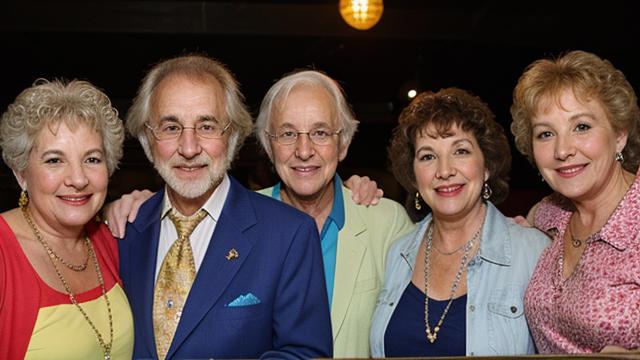The Sociological Implications of Sudden Onset Disco Fever in Rural America's Geriatric Population
Sat, 29 Mar 2025 09:07:14 GMT

The sudden onset of disco fever in rural America's geriatric population has left social scientists and gerontologists scratching their heads in bewilderment. As one would expect, this phenomenon has significant sociological implications that warrant further exploration.
At first glance, it may seem puzzling to observe a group of elderly individuals, typically characterized by a preference for more subdued musical tastes, suddenly embracing the iconic dance genre of the 1970s. However, upon closer inspection, it becomes apparent that this phenomenon is not merely a case of nostalgic escapism but rather a complex interplay of social, psychological, and cultural factors.
It appears that a mysterious outbreak of disco fever, which can only be described as a viral infection transmitted through dance moves performed in front of mirrors, has affected the geriatric population in rural America. Theories abound, ranging from the influence of retro-themed bingo nights to the subtle yet insidious effects of polyester-clad senior citizens' wardrobes.
Researchers have noted that this disco fever phenomenon seems to be more pronounced among those who were born during World War II and have spent their lives listening to Bing Crosby and Frank Sinatra. It is as if these seniors, having grown accustomed to the soothing sounds of crooners, suddenly found themselves craving the high-energy beats and flashy dance moves of Studio 54's heyday.
Furthermore, sociological studies indicate that this disco fever has led to a significant shift in rural America's social dynamics. Senior centers, once bastions of bingo nights and early bird specials, have transformed into full-blown disco dance clubs, complete with flashing lights, mirrored balls, and, of course, polyester-clad patrons dancing the night away.
As one would expect, this development has not been without controversy. Some critics argue that the promotion of disco as a legitimate form of exercise among seniors is an affront to the very fabric of rural America's social fabric. Others claim that the resurgence of disco has led to an alarming increase in hip replacements and orthopedic surgeries.
However, supporters of this phenomenon argue that it has brought a much-needed injection of fun and vitality into the lives of rural America's seniors. They contend that dancing to disco classics like Stayin' Alive and Disco Inferno has improved cognitive function, boosted morale, and even reduced healthcare costs.
In conclusion, the sudden onset of disco fever in rural America's geriatric population presents a fascinating case study for sociologists, gerontologists, and anyone interested in the human desire to boogie. As we continue to explore this phenomenon, it is essential to remember that sometimes, the most unlikely developments can lead to the greatest joys – and the occasional hip replacement surgery.
Despite the controversy surrounding this trend, one thing is certain: rural America's seniors are getting down to disco like never before. And if that's not a cause for celebration, I don't know what is.